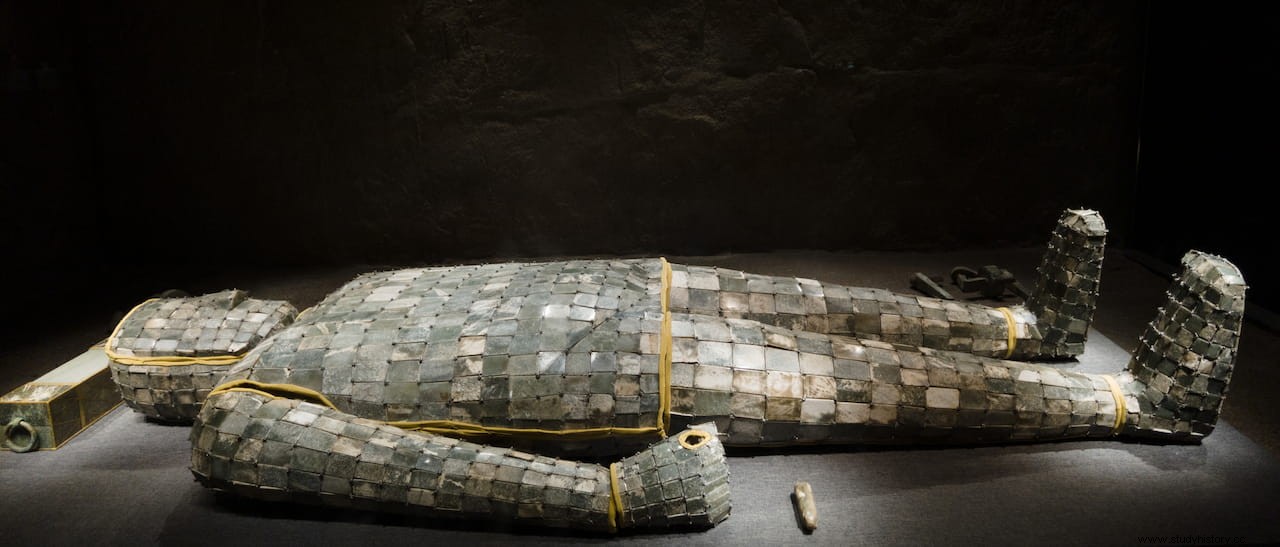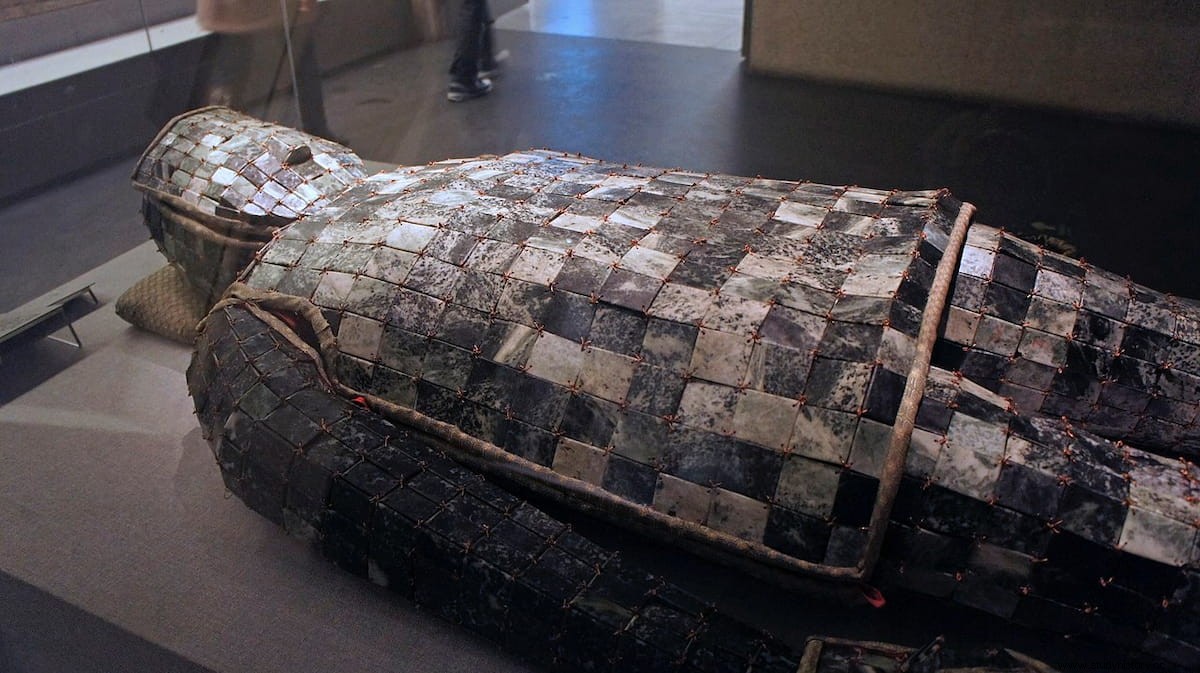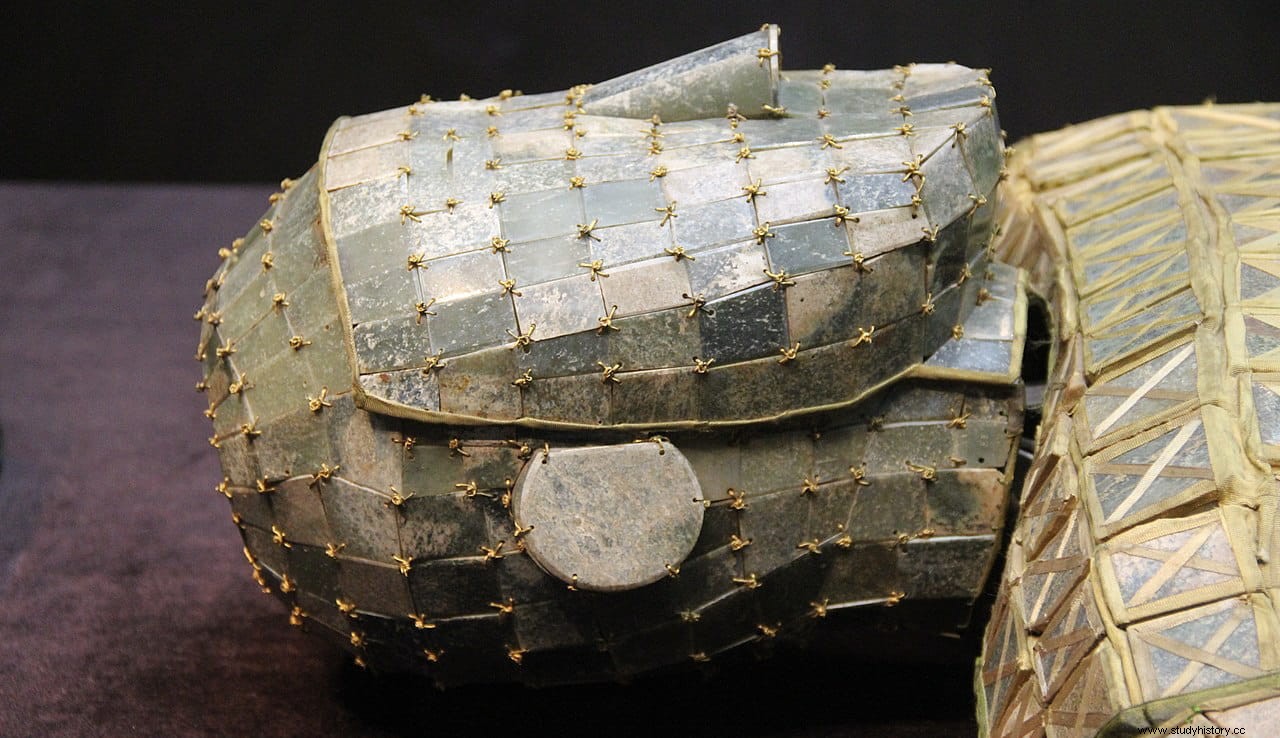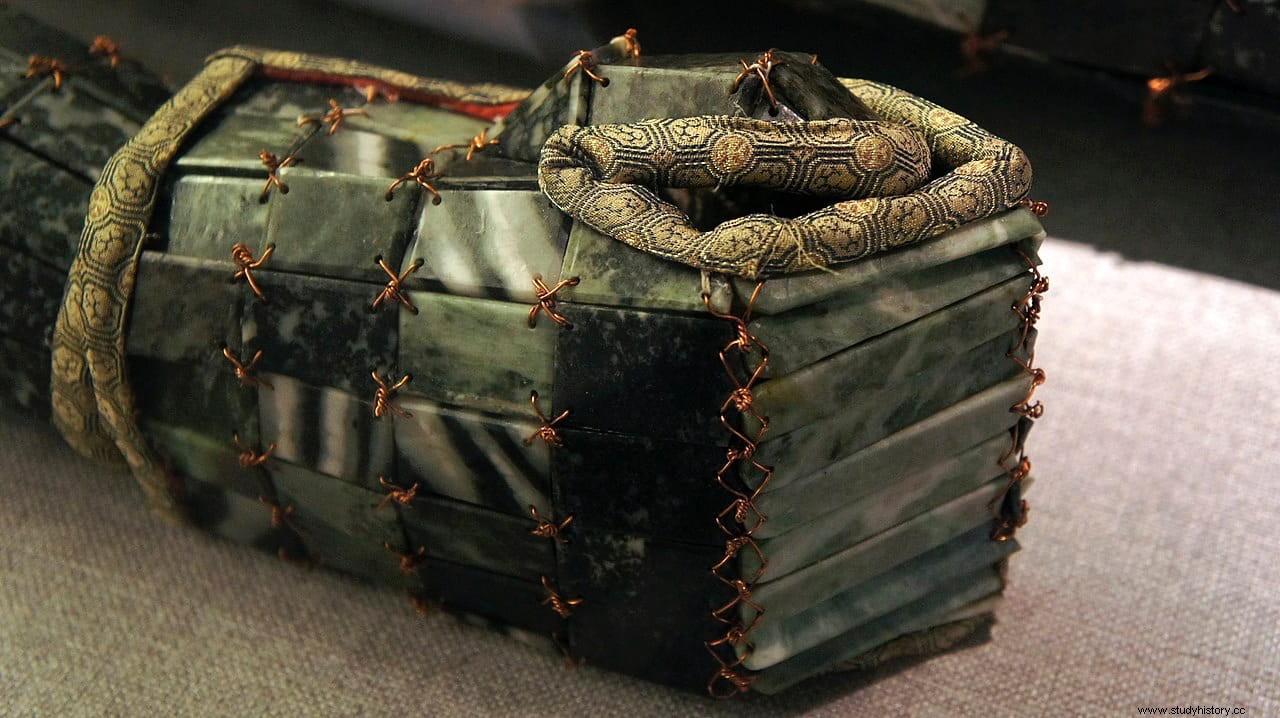In the article that we dedicated to the Chinese jade discs and tubes created in the Neolithic, we said that those objects were indicative of a high social position, given the cost and time used in their manufacture since jade is a difficult stone to work with, which which seemed to suggest that only the most powerful members of the community could afford them.
This use and taste for jade in Chinese society would be maintained throughout the centuries, valuing it for its hardness, resistance and beauty, becoming a symbol of wealth (more valued than gold and silver) and power that, in addition , came to be associated with Chinese beliefs about the immortality of the soul and life after death.
Jade began to be used in the funerary trousseau of emperors, aristocrats and nobles, since properties in the preservation of bodies were attributed to it.

Historical sources mention that the Han dynasty, which ruled between 206 B.C. and 220 AD, he had even created burial suits made of jade. However, for a long time this was thought to be an exaggeration or outright legend.
Until in 1968 two of these suits made entirely of jade were discovered in the tombs of Prince Liu Sheng, son of Emperor Jing and brother of the later Emperor Wu of Han, and his wife Dou Wan, in two caves on the side of a mountain near the town of Mancheng in central Hubei province.

The mausoleum of both forms a single set with the tombs 120 meters apart and joined by a stone path between 6 and 14 meters wide. It is one of the few Han dynasty mausoleums that was found intact, with all its riches, and containing a total of 5,124 objects, most of precious materials such as jade, silk and bronze.
Among those objects are the two jade suits they were buried in and were wearing at the time of discovery. Dou Wan's has 2,160 jade plates held together with gold thread, while Liu Sheng's has 2,498 pieces, also held together with more than three pounds of gold thread, like green and gold mosaic armor. /P>
Each costume has 12 sections, the face, the head, the front and back of the robe, the arms, the gloves, the legs and the feet. They are made to fit the body, and the head part has carved plates representing the eyes, ears, nose, and mouth.

The smallest pieces measure 1.5 by 1 centimeter, while the largest reach 4.5 by 3.5 centimeters. Their thickness varies between 0.2 and 0.35 centimeters, and each one has a hole in each corner for the gold thread that holds them together. It is estimated that it took about ten years to make one of these suits.
Their purpose was to protect the soul from the flesh (called po ) in front of the hun or life spirit. And it is that according to Chinese beliefs each human being had these two souls. The hun it left the body escaping through the head (for which the suit left a small opening) and began the journey to the afterlife. While the po it was kept inside the body thanks to the suit. To prevent it from coming out, jade plates were placed in the openings of the body.

In the end, the suits, how could it be otherwise, did not fulfill the function for which they were supposed to be made, and the bodies decomposed, leaving only their skeletal remains. However, since jade is a porous rock with absorption capacity, it is speculated that the DNA of both spouses is intermingled with it.
More jade suits have subsequently been found. In 1973 Prince Huai's was discovered in Dingxian; in 1983 another in the tomb of King Zhao Mo of Nanyue, in Guangzhou; and in 1991 one more in the tomb of King Liu Wu of Chu, in Xuzhou. In total, about two dozen jade suits have been found.
Some are made up of square or rectangular plates, while others are triangular or trapezoidal in shape. They are joined by different materials, depending on the status of the person, which can be gold, silver, copper or silk thread.

After the fall of the Han dynasty, the custom of jade suits completely disappeared, and it is believed that most of the suits made during that time were lost to tomb robbers. In fact, according to Arthur Aufderheide, it was to discourage those who burned the suits for gold thread that Emperor Cao Pi banned their production in AD 223.
